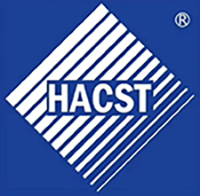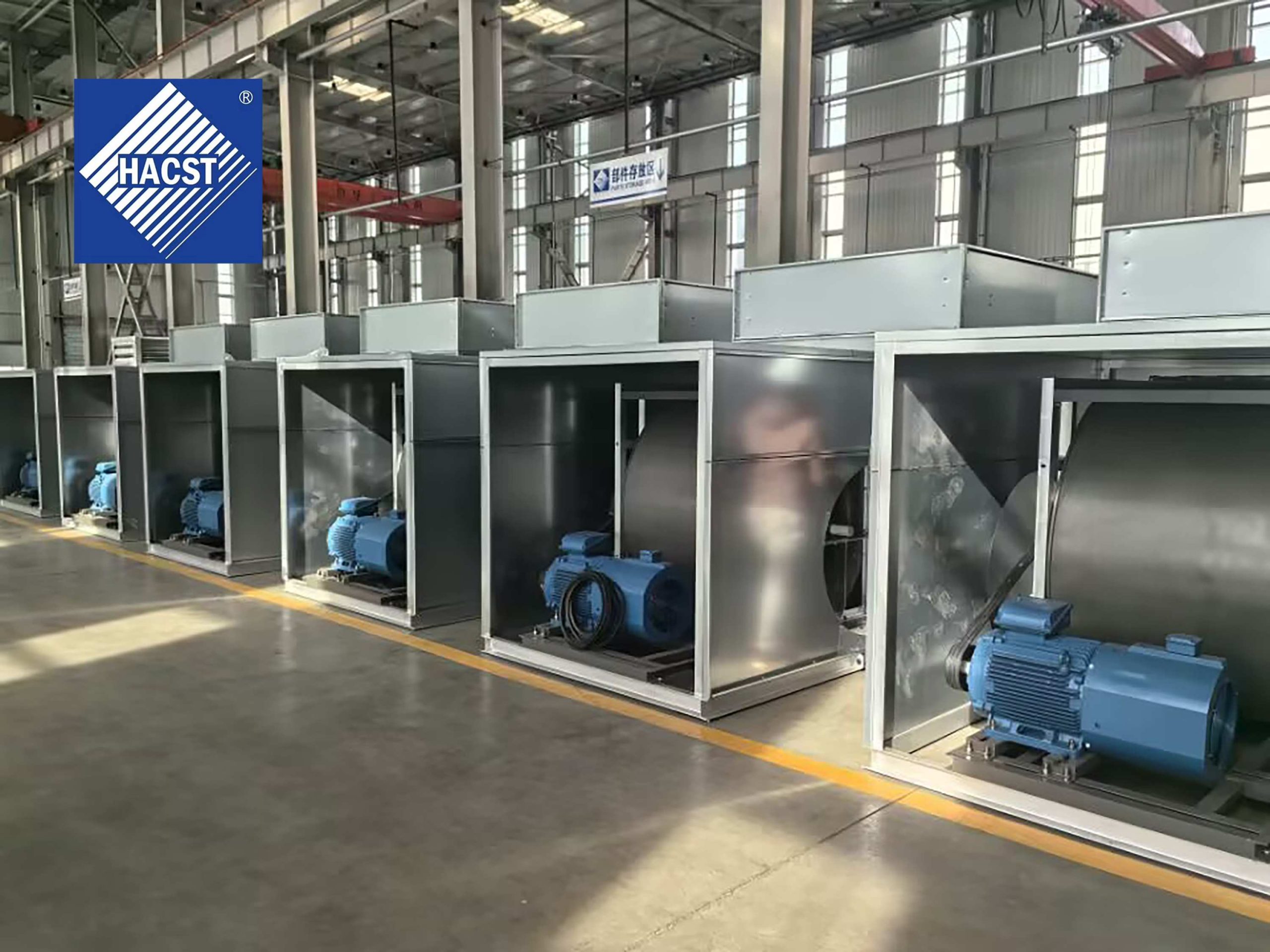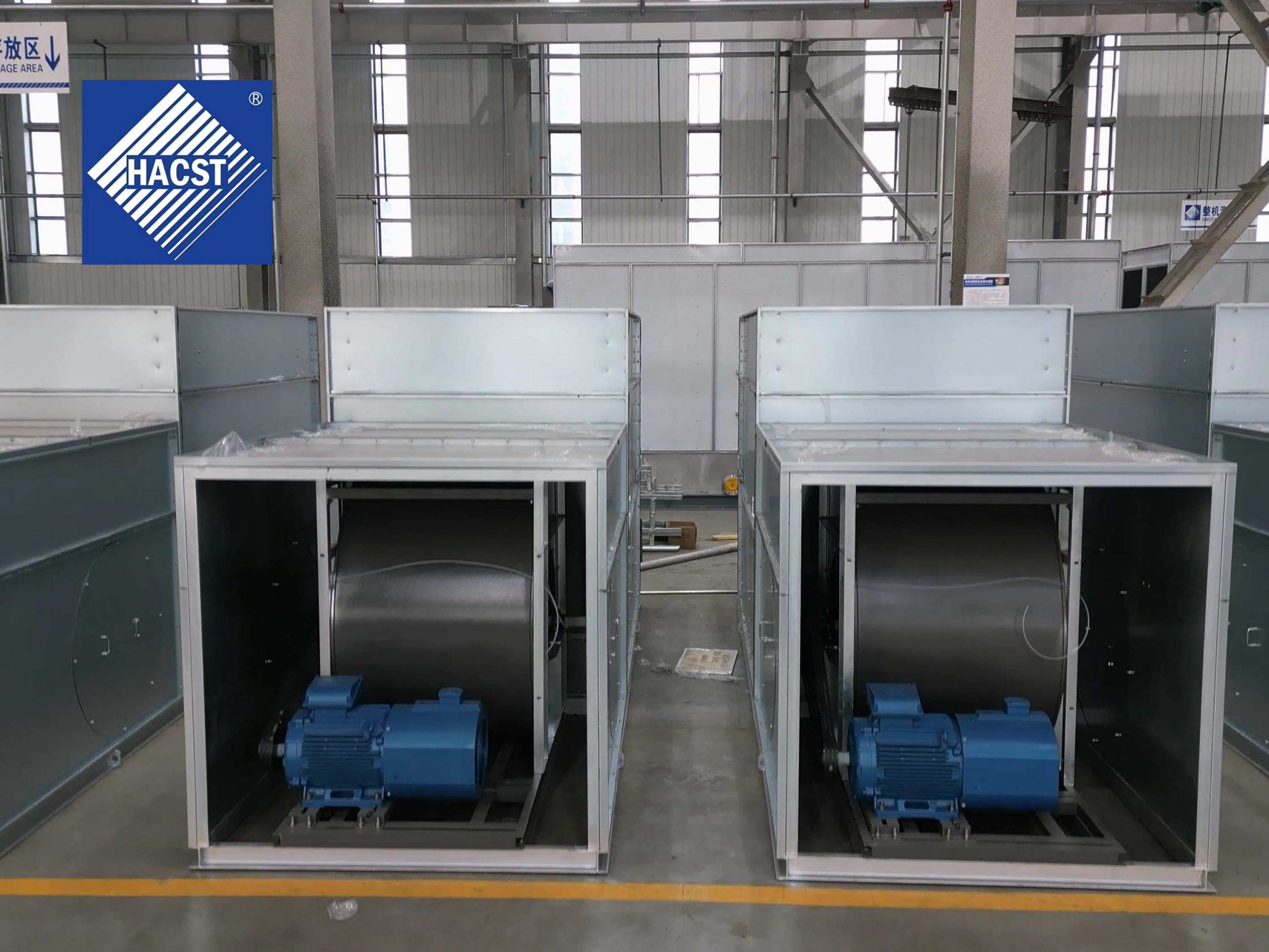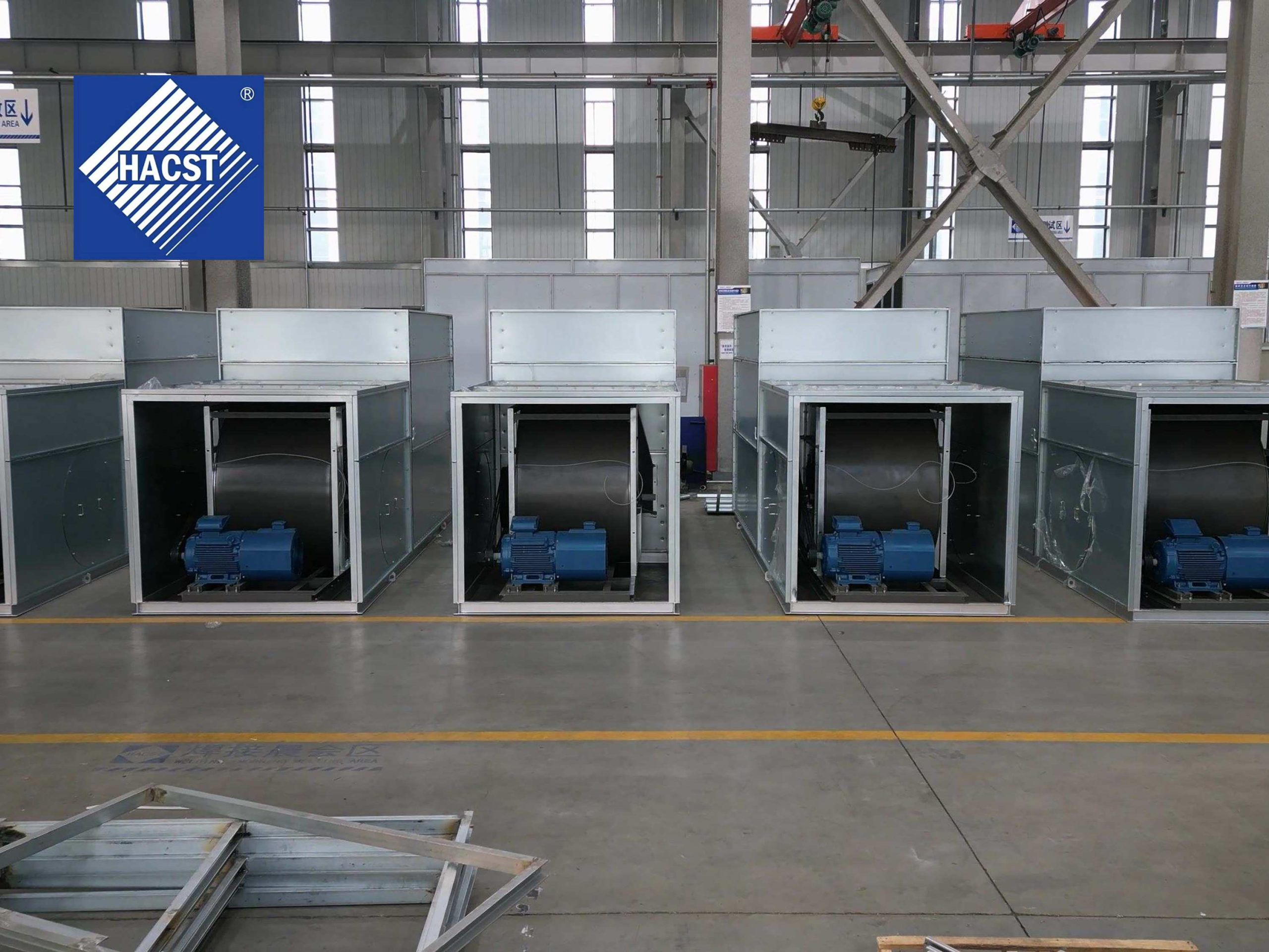guess you like
BHX Combined-Flow Closed-Circuit Cooling Tower – Scalable, Efficient, and Low-Scaling Design
BNX Counterflow Closed Circuit Cooling Tower – High-Efficiency Industrial Heat Exchanger
ZNX Counterflow Evaporative Condenser – Compact, High-Performance Heat Rejection
ZHX Combined Flow Evaporative Condenser – Enhanced Efficiency with Fill-Assisted Heat Transfer
Cooling Coil
Drift Eliminator
PVC Fill
Fan
Spray Nozzle
V-type Air Cooler
ZNC Counterflow Evaporative Condenser (Centrifugal Fans)
Product Overview
ZNC delivers the thermodynamic advantages of counterflow evaporative condensation while using centrifugal fans that can handle external static pressure from intake or discharge ductwork. This enables compliant indoor installations where rooftop or open-air discharge is impractical or where stringent noise ordinances apply.
Working Principle
Refrigerant condenses inside the coil; spray water and induced airflow remove heat via evaporation. Unlike axial units, centrifugal fans draw air into the tower and discharge it against static resistance, maintaining design airflow through ducts, silencers, or louver banks, without compromising coil wetting or condensing pressure control.
When to Choose Centrifugal
- Indoor mechanical rooms with limited roof access.
- Projects requiring ducted intake/discharge with filters or attenuators.
- Ultra-low exterior noise requirements in dense urban zones.
- Retrofits where existing duct shafts must be reused.
Applications
- Hospitals, laboratories, data centers with stringent acoustic/air routing constraints.
- Food and pharma plants where intake air must be conditioned or filtered.
- Basement plant rooms in high-rise complexes.
Sizing & Ducting
In addition to heat rejection, selection must include external static pressure from duct runs, elbows, plenums, and silencers. Fan curves with VFD allow turndown and compensation for filter fouling. Provide access for coil and nozzle maintenance despite ducting. Consider larger casing for lower fan tip speed and noise.
Energy & Water Considerations
Centrifugal systems may draw more fan power than axial units; however, operating at a lower condensing temperature still achieves net system energy savings versus air-cooled solutions. Optimize with VFD control, smooth duct geometry, and low-pressure-drop silencers. Water management mirrors ZNX/ZHX with cycles control and filtration.
Materials & Options
Choose stainless steel coils for aggressive water or high sanitation requirements. Consider epoxy-coated casings for chemical exposure. Options include double-wall duct connections, quick-release access doors, basin heaters, and SS fasteners for hygienic wash-down.
Controls & Acoustic Design
- Static-pressure-based fan control with VFD to maintain design airflow.
- Condensing pressure reset with integrated pump staging.
- Acoustic design: splitter silencers, lined ducts, low blade passing frequency.
Installation & Maintenance
Verify structural support for dynamic fan loads. Seal duct connections to prevent bypass. Commission by balancing airflow and verifying spray coverage at rated static. Maintenance includes belt tension (if belt-driven), bearing lubrication, and periodic silencer cleaning to avoid pressure rise.
Development Trends
High-efficiency centrifugal wheels, direct-drive EC motors, and smart static-pressure control are pushing ZNC toward quieter, more compact indoor-ready packages. Predictive maintenance via vibration and pressure sensors reduces unplanned downtime.




